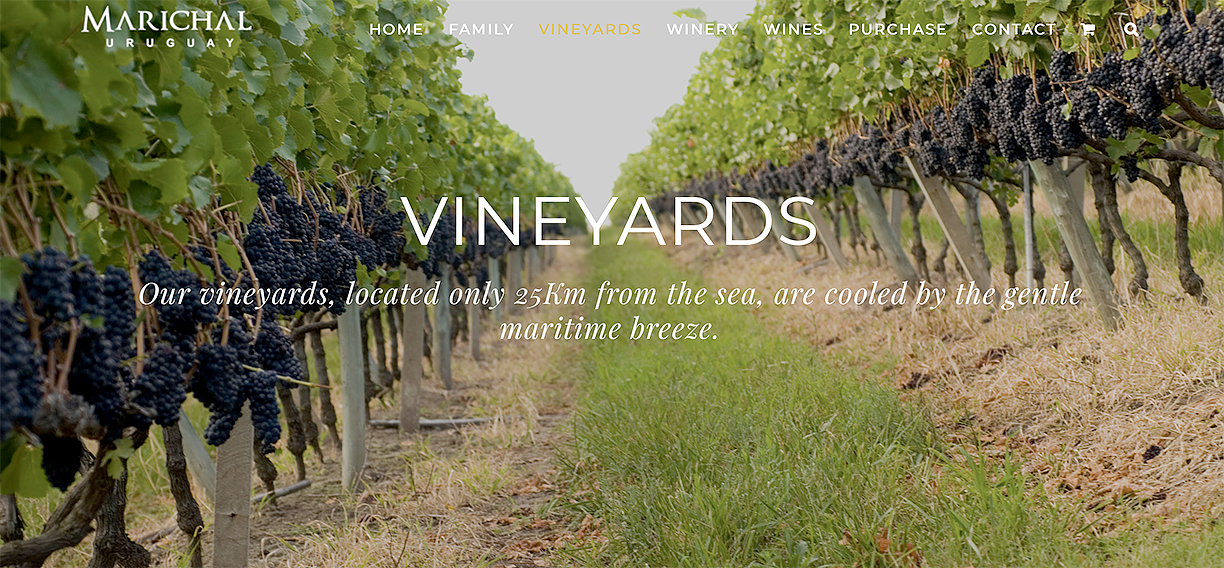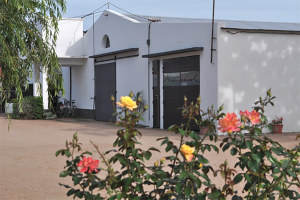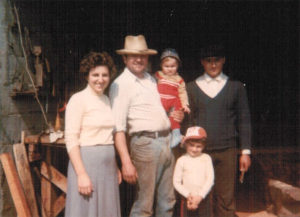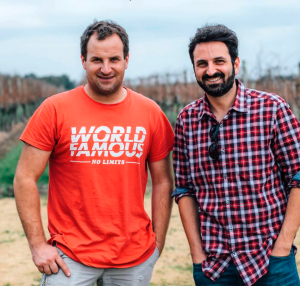Deep ruby color; plum, black fruits, spice, smoke on the nose; black plum, black cherry, blackcurrant, blueberries, licorice, leather, toasty oak, oak spice on the palate.

Dry; delicious, firm tannins—something of a surprise since tannat is alpha tannic wine, but years of finishing and bottle age tamed tannat tannins so they are framework rather than lead player in the initial attack. Balancing acidity. Full body. Delightfully smooth and easy drinker. It does benefit from time in the glass, and certainly you can decant, but—to my surprise—out of the bottle was rich and delicious. Tannat also has great texture in the mouth. 13.5% ABV
This is Marichal’s flagship grand reserve—my previous review of their “reserve” tracks very similarly to this, but this “grand reserve” is more subtle and has more depth and complexity. Grapes from 40-year-old vines planted in the Etchevarría zone of Canelones. The soils are rich in clay and calcium carbonate, which reflects in this wine. Fermented 18 days in concrete tanks. Malolactic fermentation. Aged 20 months in 70% oak barrels, 30% concrete tanks. There is oak influence, but tannat is robust enough to handle it with aplomb.

Tannat was historically grown in southwest France in the French Pyrénées. Basque immigrants brought it to Uruguay, and tannat found its ideal place in much the same way malbec found its place in Argentina. Today, tannat is the “national grape of Uruguay.” Uruguay is the fourth largest wine producing country in South America behind Argentina, Chile, and Brazil. Tannat wines from Uruguay have more elegance, softer tannins and blackberry fruit notes than tannat from France.

Uruguay is the native Guaraní word for “River of Painted Birds.” The country is a modern democratic constitutional republic that ranks first in South America in democracy, peace, press freedom, and low perception of corruption. The Bodega Marichal e Hijo vineyards and winery are about 15 miles from the ocean and the Rio de la Plata and 15 miles north of Uruguay’s capitol, Montevideo. The closeness to the Atlantic Ocean and the Rio Uruguay delivers cooling maritime breezes to the vines.
The Marichal family has been making wine for more than 80 years and growing wine grapes for more than a century. The great grandparents of the current owners, descendants from the Canary Island and Italy, established in the area of Etchevarrí, Canelones, in southern Uruguay. They planted their first vineyards in tannat.


The great-grandparents had four children. When the great grandfather passed away, his wife decided in 1938 to build a small winery with underground concrete vats. In 1948, the current owner’s grandfather and grandmother married and had three children. Calling on her Italian heritage, the grandmother made meals for workers who had to stay at the winery because of poor roads. Workers vied to work the Marichal vineyards.
In 1975, Juan Carlos (Carlitos) Marichal married Lidia, who also came from a grape-growing family. Carlitos and Lidia expanded the winery and upgraded the vineyards. They also recognized the future of Uruguayan wineries depended upon expanding exports.
Current owners Alejandro and Juan Andrés grew up in the winery and studied oenology. Alejandro graduated from the School of Oenology Presidente Tomás Berretta in Uruguay. Juan Andrés graduated from J.A. Maza University in Mendoza, Argentina.
Marichal Grand Reserve Tannat, Canelones, Uruguay 2018 is a step up from their “reserve” effort, which was outstanding in its lane. The Grand Reserva is an excellent expression of tannat with rich, delicious red fruit and tasty tannins. This does tannat’s signature—darker fruits and assertive tannins—wonderfully well. Pairs with lamb; high-fat grilled meats; barbecue; roast beef; wild game; casseroles and stews. Cheese—spicy cheeses, double or triple cream camembert or brie, gorgonzola. $58-65
